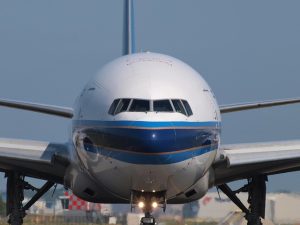
T-tail empennages are undoubtedly popular. They are characterized by their T-shape design consisting of a single vertical stabilizer and a horizontal stabilizer.
All airplanes have an empennage. Also known as the tail assembly, it’s the structure on the back of an airplane. At the front of an airplane is the cockpit, followed by the fuselage body. The empennage is the final part; it’s attached to the back of the body where it provides stability during flight. There are different types of empennages, however, one of which is T-tail. With their T-shaped design, T-tail empennages offer both advantages and disadvantages.
Pro: Improved Stability
While all types of empennages provide stability, T-tail empennages offer greater stability than their counterparts. This is because the horizontal stabilizer is located away from the turbulence wakes generated by the airplane’s wings. Less “rough” air will strike the horizontal stabilizer on a T-tail empennage, resulting in greater stability.
Pro: Reduces Drag
Airplanes can minimize their drag by using a T-tail empennage. T-tail empennages relocate the horizontal stabilizer away from the turbulence wakes of the wings. This allows for improved stability while simultaneously minimizing drag.
Pro: Protects Against Jet Exhaust
T-tail empennages offer protection against jet exhaust. Jet engines produce exhaust gases as a byproduct of their combustion process. Depending on where the jet engines are located, these exhaust gases may strike the empennage. T-tail empennages, however, aren’t directly exposed to jet exhaust. If an airplane’s jet engines are located in the rear, it may use a T-tail empennage to protect against jet exhaust.
Con: High-Angle Attack Stalling
Airplanes with a T-tail empennage are more likely to stall at high angles of attack than their counterparts with a different type of empennage. Depending on how the elevators are designed, it may cause airflow problems. Airflow over the T-tail empennage may be banked by the wings, resulting in a greater risk of stalling — particularly at high angles of attack.
Con: Flutter
There have been reports of T-tail empennages causing flutter. Flutter is a phenomenon that involves vibrations of an airplane’s wings. As the wings begin to vibrate, they will look like they are “fluttering” rapidly. T-tail empennages may increase the risk of flutter.
Con: Maintenance Difficulty
Another disadvantage of T-tail empennages is maintenance difficulty. They are considered more difficult to maintain than other types of empennages. They are located high up, so maintenance crews may struggle to access T-tail empennages. T-tail empennages are also more complex than other types of empennages.



